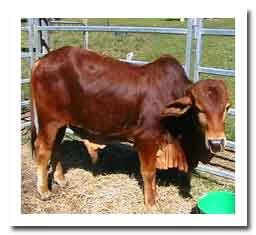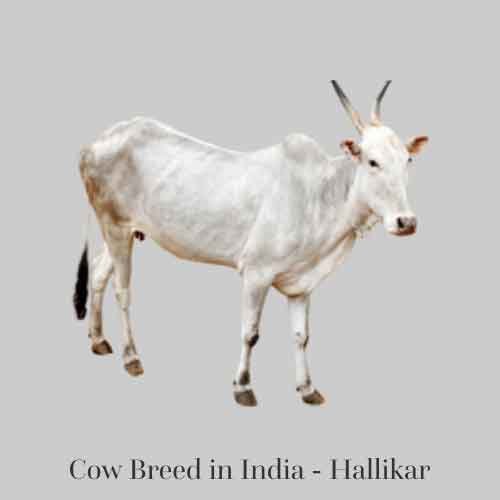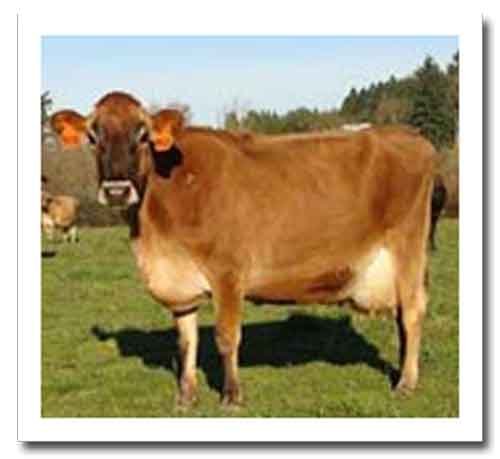Cow and Buffalo Breeds in India: At present, the trend of most people is moving towards Animal Husbandry (पशु-पालन), here is the list of Indigenous dairy breeds of cattle, Indigenous Draught breeds of cattle, Indigenous dual purpose breeds of cattle, Exotic dairy breeds of cattle, Cross bred – dairy cattle given here to know it.
Because of milk production, meat and wool to get the passive income or as a business, the farmer use desi cow and buffalo breeds in India is going on from long time ago as a mix farming (growing of crops and the raising of livestock).
Scientific name of Cow: The scientific names of Indian cow is Bos Taurus.
Scientific name of Buffalo is Bubalus Bubalis
Table of Content
Cow and Buffalo Breeds in India
So today we will tell you about high demanding Cow and Buffalo Breeds in India: Gir, Red Sindhi, Sahiwal Cattle, Hallikar, Khillari Cow Kangayam, Bargur, Umblachery, Pulikulam, Alambadi, Tharparkar cattle, Hariana Cattle, Kankrej, Ongole Cattle, Krishna Valley, Deoni and Exotic breeds are Jersey, Holstein Friesian, Brown Swiss Cow, Red Dane, Ayrshire, Guernsey.
Buffalo Breeds are Murrah, Surti, Jaffrabadi, Bhadawari, Nili Ravi, Mehsana such breeds of cow and buffalo in India which produces milk liters of liter annually. Deshi or desi cows are the name given to cows of various kinds or due to Indian origin or regional values.
Cattle: Cow Breeds in India
Cattle are huge domesticated bovines (Bos taurus). They are the most common species in the genus Bos. Adult females are known as cows, while adult males are known as bulls.
This is a list of cattle breeds that are entirely or partially indigenous to India and some exotic breeds are also listed below. Because certain breeds have complicated or obscure histories, their inclusion here does not mean that they are mostly or solely Indian.
Important Meaning
- Breed(s) Meaning in Hindi – नसल, नस्ल, वंश, कुल
- Cow Meaning in Hindi: गाय, गो, गौ, बछड़ा, मादा, धेनु
- Buffalo Meaning in Hindi: भैंस, भैंसा
So let’s know about these cattle breeds.
Indigenous Dairy Breeds of Cattle (Milk Animals)
- Gir
- Cow Breeds: Bhadawari, Desan, Gujarati, Kathiawari, Sorthi, and Surati are some of the (desi cow breeds name) other names for this indian breed.
- Desi Cow Origin: This desi cow breed originated in the Gir forests of Gujarat’s South Kathiawar district, but it’s also found in Maharashtra and Rajasthan. This original Gir cow’s hardiness and disease resistance of this bread are well-known.
- Skin Color: The most common skin colours are white with dark red or chocolate-brown spots, or black or simply red.
- Horn: The horns are unusually bent, resembling a half moon.
- Milk yield: Lactational milk yields range from 1200 to 1800 kg.

2. Red Sindhi
- Cow Breeds: Red Sindhi breed is also known as Red Karachi, Sindhi, or Mahi.
- Desi Cow Origin: Originated in undivided India’s Karachi and Hyderabad (Pakistan) districts, and also raised in few organised farms in our country.
- Skin colour: Red with white stripes and varied, degrees of red from dark to bright.
- Milk yield: Lactational milk yields range from 1250 to 1800 kg.
- Bullocks can be employed for road and field labour despite their sluggishness.

- Sahiwal Cattle
- Desi Cow Origin: Originated in India’s undivided Montgomery region.
- Cow Breeds: Lola (loose skin), Lambi Bar, Montgomery, Multani, and Teli are all names for this indian breed.
- Skin colour: Reddish dun or pale crimson in colour, with white spots on occasion in sahiwal cattle.
- Sahiwal cattle is the best native dairy breed. The body is symmetrical and the skin is loose.
- Milk yield: Sahiwal cattle breed’s average lactation milk yield is between 1400 and 2500 kg.

Indigenous Draught Breeds of Cattle (Milk Animals)
- Hallikar
- Vijayanagarm, a former princely state that is now part of Karnataka, is the place where this breed originated.
- Grey or dark grey is the colour.
- Animal with large forehead, long horns, and strong legs that is compact, muscular, and medium in size.
- This indian breed is recognised for its draught capacity and, in particular, trotting aptitude.

- Amritmahal
- Karnataka’s Hassan, Chikmagalur, and Chitradurga districts are where it all began.
- Amiritmahals are grey cattle that range in colour from nearly white to nearly black.
- Typically, the muzzle, feat, and tail are all black.
- Horns are long and sharply pointed at the end.

- Khillari Cow
- Originally from Maharashtra’s Sholapur and Sitapur districts.
- Cattle Breeds: Khillari Cow are similar to the Hallikar breed.
- The colour is grey-white.
- Long horns have an odd way of turning forward. The horns are usually black, but can be pinkish.
- Bullocks are powerful and swift.
- Kangayam
- Also called kongu or konganad.
- Kangayam, Dharapuram, Perundurai, Erode, Bhavani, and parts of Erode and Coimbatore district’s Gobichettipalayam taluk
- Bulls are grey with a dark hump, forequarters, and hindquarters.
- The horns are virtually straight with a small bend backwards, and they are wide apart.
- Cattle Breed’s color: This cow animal can be either grey or white with black rings around them, the eyes are dark and prominent.
- This cattle breeds have compact bodies in a medium size.
- Bargur
- Found in the Bhavani taluk of Tamilnadu’s Erode district, near the Bargur hills.
- Designed for use on rocky, rough terrain.
- Brown with white patterns in general.
- The animals are well-built, compact, and of average size.
- They are known for their trotting pace and endurance.
- She is cautious in her behaviour and avoids strangers.
- Umblachery
- Jathi madu, Mottai madu, Molai madu, and Therkathi madu are some of the other names for it.
- Tamil Nadu’s Thanjavur, Thiruvarur, and Nagappattinam districts are where it all began.
- They are noted for their strength and sturdiness and are suitable for wet ploughing.
- Umblachery calves are born red or brown with all of the distinctive white markings on the face, limbs, and tail.
- The legs contain white sock-like patterns below the hocks.
- Bullock dehorning is a unique process among Umblachery cattle.
- Pulikulam
- This breed is abundant in the Cumbum Valley of Tamil Nadu’s Madurai district.
- Jallikattu madu, kidai madu, and sentharai are some other names for it.
- Small in size and colour, usually grey or dark grey.
- The hump is well-developed.
- Typically used for field penning.
- Useful for ploughing.
- This breed is distinguished by the presence of reddish or brownish markings on the muzzle, eyes, switch, and back.
- Backward curved horns typical of cattle of the Mysore breed.
- The breeds are vigorous and useful draught animals, although they are not fast trotters.
- Alambadi
- Alambadi is a Tamilnadu town in the Dharmapuri district.
- The colour is grey or dark grey.
- The forehead, limbs, and tail will all have white markings.
- Like Mysore cattle, the horns curve backward.
- Resembles Hallikar is another name for Betas.
- It comes in handy when ploughing.
Read More: 880+ State Bird of West Bengal
Indigenous Dual purpose Breeds of Cattle (Milk Animals)
- Tharparkar cattle
- It originated in the Tharparkar area of Pakistan so it known as tharparkar cattle and is now found in Rajasthan.
- Also known as Thari, Gray Sindhi, and White Sindhi.
- This tharparkar cattle featured a lyre-shaped horn and are medium in size.
- White or light grey is the colour of the body of this tharparkar cattle cow breed.
- The bullocks are ideal for ploughing and casting, and the cows produce between 1800 and 2600 kg of milk every lactation.
- Hariana Cattle
- It is popular in Haryana’s Rohtak, Hisar, Jind, and Gurgaon districts, as well as Punjab, UP, and parts of MP.
- This Hariana cattle’s (cow) horns are small.
- Hariana Cattle’s Bullocks are strong working animals.
- Haryana cows are good milkers, producing 600 to 800 kg of milk every lactation.
- Kankrej
- Wadad or Waged, Wadhiar is another name for it.
- Originated in Gujarat’s Southeast Rann of Kutch and Rajasthan’s borderlands (Barmer and Jodhpur district).
- The horns are formed like lyres.
- The animal’s colour ranges from silver-grey to iron-grey to steel black.
- Kankrej has a unique gait known as 1 ¼ paces (sawai chal).
- Kankrej cattle are prized for their speed and strength. Ploughing and hauling are both possible uses.
- The cows are excellent milkers, producing approximately 1400 kg every lactation.
- Ongole Cattle
- Nellore is another name for Ongole cow or Ongole Cattle.
- Ongole taluk in Andhra Pradesh’s Guntur district is the home tract.
- A large muscular breed with a prominent hump.
- Ongole cow is good for heavy-duty draught work.
- The colour of the ongole cattle is white or light grey.
- The average lactation production is 1000 kg in Ongole Cattle.
5.Krishna Valley
- Originated in the black cotton soil of the Krishna River’s watershed in Karnataka, and also found in Maharastra’s border areas.
- The animals are big, with a massive frame and a short, loosely formed body.
- The tail is almost touching the ground.
- In males, the colour is generally grey white with a deeper shade on the forequarters and hindquarters.
- Female adults have a white appearance.
- Bullocks are strong animals that are suitable for slow ploughing and have good working qualities.
- The average lactation production is around 900 kg.
- Deoni
- Dongerpati, Dongari, Wannera, Waghyd, Balankya, and Shevera are all names for this breed.
- It originated in Western Andhra Pradesh and can also be found in Maharashtra’s Marathwada region and parts of Karnataka.
- Black and white spots are common on the body.
- Lactational milk yields range from 636 to 1230 kg.
- The average caving interval is 447 days.
- Bullocks are ideal for intensive farming.
Exotic Dairy Breeds of Cattle (Milk Animals)
- Jersey
- Originated from Jersey, Island, United Kingdom.
- The smallest of the dairy cattle.
- This breed has thrived in India, where it is frequently utilised in crossbreeding with indigenous cows.
- Jersey cattle are often reddish fawn in colour.
- Body is compact and angular, with a dished forehead.
- Producers of low-fat milk with a 4.5 percent fat content.
- The average lactation production is 4500 kg.

- Holstein Friesian
- Originated in the Netherlands’ northern regions, particularly in the province of Friesland.
- The largest dairy breed, with a robust build and a huge udder.
- Breeds have distinct black and white markings that make them instantly identifiable.
- Cows produce between 6000 and 7000 kg of milk per lactation on average.
- Brown Swiss Cow
- The Brown Swiss breed originated in Switzerland’s hilly regions.
- Breeds that are tough in nature and produce a lot of milk.
- The average lactation production is 5000 kg.
- The Karan Swiss is an excellent crossbred cattle developed at NDRI Karnal, by crossing this breed with Sahiwal cattle.
- Red Dane
- Orginated in Denmark.
- This Danish breed’s body colour is red, reddish brown, or even dark brown.
- It’s also a large breed.
- Red Dane cattle have a lactation production of 3000 to 4000 kg.
- Ayrshire
- Originating in Scotland, Ayrshire is regarded as the most beautiful dairy breed.
- These are very energetic animals that are difficult to control.
- They do not produce as much milk or butter fat as some other dairy breeds (only 4%).
- Dunlop cattle and Cunningham cattle were other names for the breed.
- Guernsey
- Originated first on French island of Guernsey.
- The colour ranges from cherry red to brown. Mahagony and white is a colour contrast.
- Because of the high beta carotene concentration, the milk has a golden colour.
- Each lactation, Guernsey cows generate roughly 6000 kg.
- The Guernsey cow has a number of noticeable advantages over other breeds for dairy farmers, including high milk production efficiency, reduced calving difficulty, and longevity.
Cattle: Buffalo Breeds in India
Indigenous Buffalo breeds
- Murrah
- Rohtak, Hisar, and Sind in Haryana, Nabha and Patiala in Punjab, and the southern regions of Delhi state are home to the most important breed of buffaloes.
- Also known as Delhi, Kundi, and Kali.
- The colour is often jet black, with white patterns on the tail, face, and extremities.
- This breed is distinguished by its tightly curved horns.
- India’s most efficient milk and butter fat producers.
- The fat percentage of butter is 7.83 percent. Lactation yields range between 1500 and 2500 kg each lactation.
- Local buffaloes are also graded using this method.

- Surti
- This buffalo breed surti is also known as Gujarati, Deccani, Talabda, Charator, and Nadiadi.
- Gujarat’s Kaira and Baroda districts are the breeding grounds for this breed.
- The colour of the coat ranges from rusty brown to silver-grey.
- Sickle-shaped horns are somewhat long and flat.
- The breed is distinguished by two white collars, one around the mouth and the other around the brisket.
- The milk output each lactation ranges from 1000 to 1300 kg.
- This breed is unique in that its milk has a high fat content (8-12per cent).

- Jaffrabadi
- Gir woods, Kutch, and Jamnagar districts in Gujarat are the breeding grounds for this breed.
- This is the heaviest Indian buffalo breed.
- The horns are thick, falling at each side of the neck before rising at the point (drooping horns).
- With funnel-shaped teats, the udder is nicely developed.
- The average lactation yield is 1000 to 1200 kg of milk.
- Bullocks are large animals that are used for ploughing and transporting.
- These animals are mostly maintained by traditional breeders called Maldharis, who are nomads.

- Bhadawari
- The Agra and Etawah districts of Uttar Pradesh, as well as the Gwalior district of Madhya Pradesh, are home to this breed.
- This Buffalo breed is average sized.
- A characteristic of this breed is that the body is usually light or copper coloured. The colour of the eyelids is usually copper or light brown.
- Two white ‘Chevron’ lines can be found on the lower side of the neck, similar to Surti buffaloes.
- The average lactation yield is 800 to 1000 kg of milk.
- Bullocks are excellent draught animals and have a high heat tolerance.
- Milk fat content ranges from 6% to 12.5 percent. This breed is recognised for its high butter fat content and efficiency in converting coarse feed into butterfat.
- Nili Ravi
- Originated along the Ravi River.
- This buffalo breed can be found in the Sutlej Valley in Punjab’s Ferozpur district and in Pakistan’s Sahiwal.
- The breed’s unique feature is its wall eyes.
- Small, elongated head with bulging top and depression between eyes.
- Horns are small and coiled tightly.
- Bullocks are excellent for trotting work.
- Each lactation produces 1500-1850 kg of milk.
- Mehsana
- Mehsana is a dairy buffalo breed found in India.
- Gujarat’s Mehsana, Sabarkanda, and Banaskanta districts, as well as parts of Maharashtra.
- Crossbreeding between the Surti and the Murrah produced the breed.
- Murrah’s body is longer, but his limbs are lighter.
- The horns are less curled and uneven than in Murrah.
- Bullocks perform well at heavy work.
- The milk yield is 1200-1500 kgs per lactation.
- Nagpuri
- Elitchpuri or Barari are other names for this breed.
- Nagpur, Akola, and Amrawati districts in Maharashtra are the breeding grounds for this breed.
- These black animals have white patches on their faces, legs, and tail.
- Long, flat, and curving horns bend backward on each side of the back. (Horns shaped like Swaords.)
- Bullocks are capable of heavy work.
- The milk output each lactation ranges from 700 to 1200 kg.
- Toda
- This buffalo is a semi-wild breed called after the Toda tribe of the Nilgiris Hills in south India.
- Fawn and ash-grey are the most common coat colours.
- The body is covered in a thick hair coat.
- They are social creatures.
- The chest is deep and the body is lengthy and deep.
- The legs are short but powerful.
- The horns are widely spaced, curving inward, outward, and forward to produce a crescent shape.
- The average lactation yield is 500 kg of milk with an 8% fat content.
FAQ
Which is smallest cow breed in the world?
Miniature Texas Longhorn, is the smallest cow breed in the world measuring not over 115 cm in United States.
Measuring 61.1 cm (24.07 in) from the hoof to the withers (and weighing only 40 kg), Manikyam is the shortest living cow.
